Mounir Ben Ayed
Optimization of Residual Convolutional Neural Network for Electrocardiogram Classification
Dec 11, 2021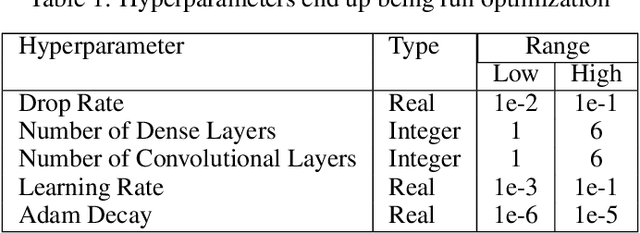
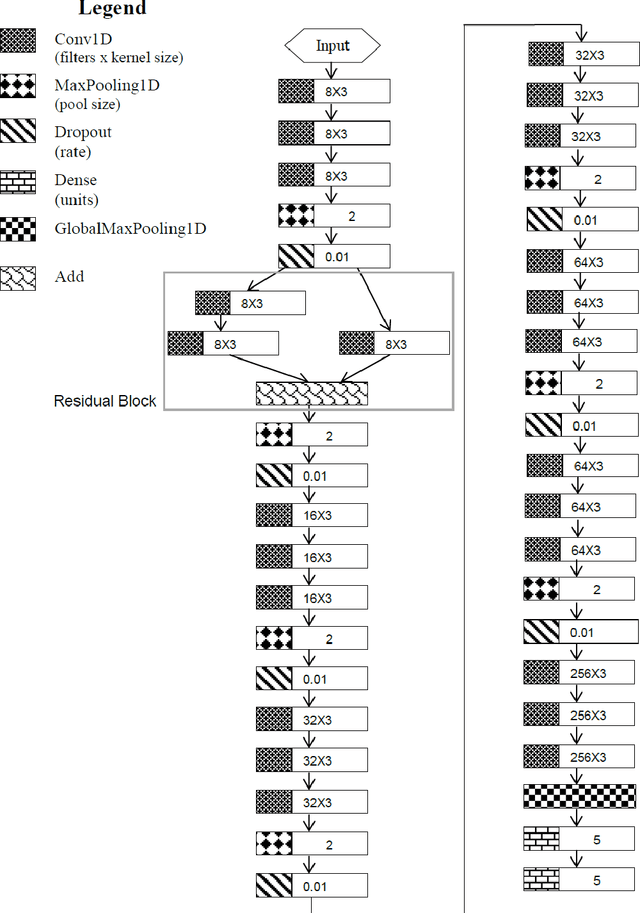
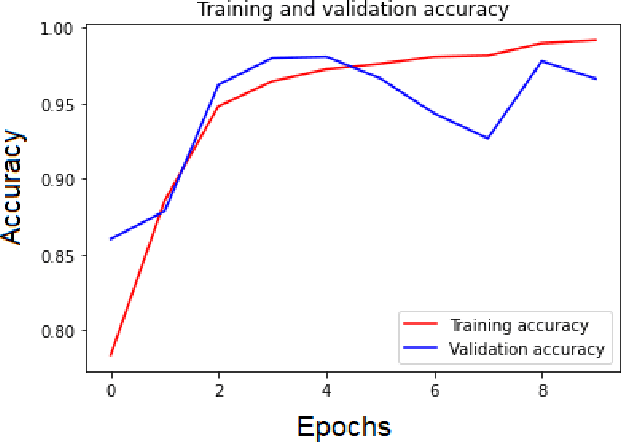

Abstract:The interpretation of the electrocardiogram (ECG) gives clinical information and helps in the assessing of the heart function. There are distinct ECG patterns associated with a specific class of arrythmia. The convolutional neural network is actually one of the most applied deep learning algorithms in ECG processing. However, with deep learning models there are many more hyperparameters to tune. Selecting an optimum or best hyperparameter for the convolutional neural network algorithm is challenging. Often, we end up tuning the model manually with different possible range of values until a best fit model is obtained. Automatic hyperparameters tuning using Bayesian optimization (BO) and evolutionary algorithms brings a solution to the harbor manual configuration. In this paper, we propose to optimize the Recurrent one Dimensional Convolutional Neural Network model (R-1D-CNN) with two levels. At the first level, a residual convolutional layer and one-dimensional convolutional neural layers are trained to learn patient-specific ECG features over which the multilayer perceptron layers can learn to produce the final class vectors of each input. This level is manual and aims to lower the search space. The second level is automatic and based on proposed algorithm based BO. Our proposed optimized R-1D-CNN architecture is evaluated on two publicly available ECG Datasets. The experimental results display that the proposed algorithm based BO achieves an optimum rate of 99.95\%, while the baseline model achieves 99.70\% for the MIT-BIH database. Moreover, experiments demonstrate that the proposed architecture fine-tuned with BO achieves a higher accuracy than the other proposed architectures. Our architecture achieves a good result compared to previous works and based on different experiments.
Interval type-2 Beta Fuzzy Near set based approach to content based image retrieval
Dec 07, 2018
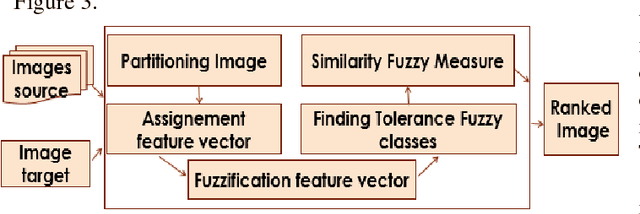
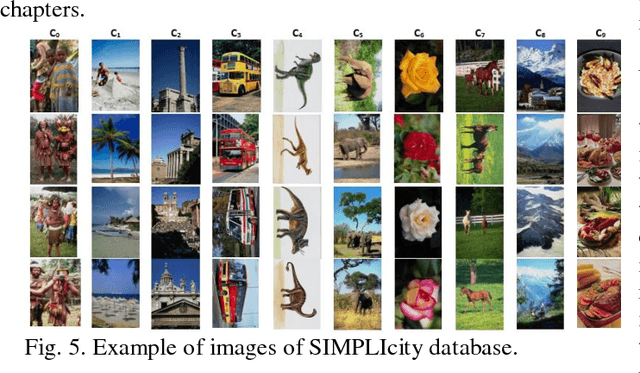

Abstract:In an automated search system, similarity is a key concept in solving a human task. Indeed, human process is usually a natural categorization that underlies many natural abilities such as image recovery, language comprehension, decision making, or pattern recognition. In the image search axis, there are several ways to measure the similarity between images in an image database, to a query image. Image search by content is based on the similarity of the visual characteristics of the images. The distance function used to evaluate the similarity between images depends on the criteria of the search but also on the representation of the characteristics of the image; this is the main idea of the near and fuzzy sets approaches. In this article, we introduce a new category of beta type-2 fuzzy sets for the description of image characteristics as well as the near sets approach for image recovery. Finally, we illustrate our work with examples of image recovery problems used in the real world.
An Evolutionary Hierarchical Interval Type-2 Fuzzy Knowledge Representation System (EHIT2FKRS) for Travel Route Assignment
Dec 05, 2018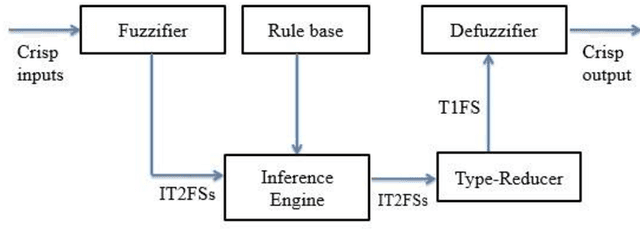
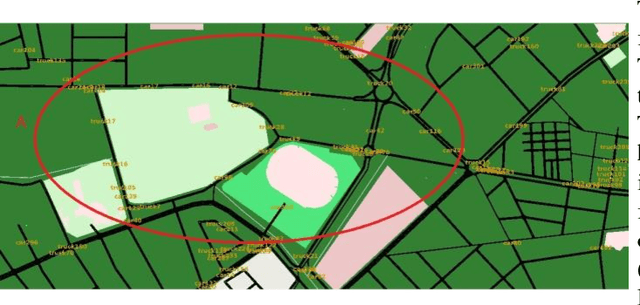
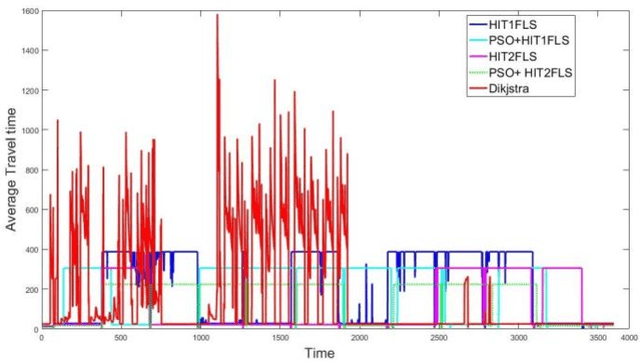
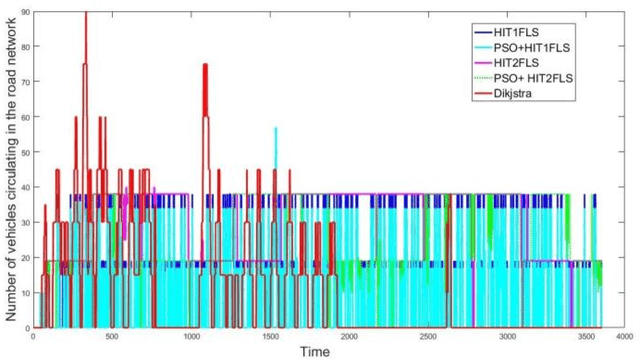
Abstract:Urban Traffic Networks are characterized by high dynamics of traffic flow and increased travel time, including waiting times. This leads to more complex road traffic management. The present research paper suggests an innovative advanced traffic management system based on Hierarchical Interval Type-2 Fuzzy Logic model optimized by the Particle Swarm Optimization (PSO) method. The aim of designing this system is to perform dynamic route assignment to relieve traffic congestion and limit the unexpected fluctuation effects on traffic flow. The suggested system is executed and simulated using SUMO, a well-known microscopic traffic simulator. For the present study, we have tested four large and heterogeneous metropolitan areas located in the cities of Sfax, Luxembourg, Bologna and Cologne. The experimental results proved the effectiveness of learning the Hierarchical Interval type-2 Fuzzy logic using real time particle swarm optimization technique PSO to accomplish multiobjective optimality regarding two criteria: number of vehicles that reach their destination and average travel time. The obtained results are encouraging, confirming the efficiency of the proposed system.
An Online Writer Identification System based on Beta-Elliptic Model and Fuzzy Elementary Perceptual Codes
May 30, 2018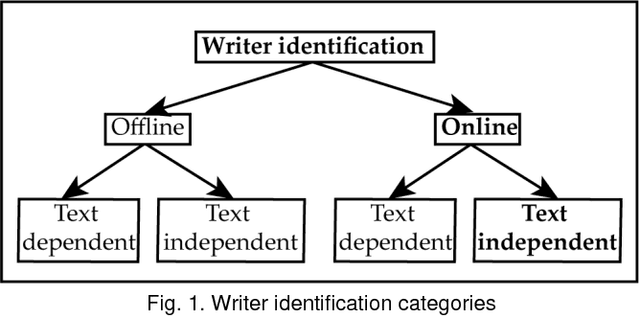



Abstract:Actually, the ability to identify the documents authors provides more chances for using these documents for various purposes. In this paper, we present a new effective biometric writer identification system from online handwriting. The system consists of the preprocessing and the segmentation of online handwriting into a sequence of Beta strokes in a first step. Then, from each Beta stroke, we extract a set of static and dynamic features using four features extraction techniques based on the Beta Elliptic model and the Fuzzy Elementary Perceptual Codes. Next, all the segments which are composed of N consecutive Beta strokes are categorized into groups and subgroups according to their position and their geometric characteristics. Finally, Deep Neural Network are used for classification. Experimental results reveal that the proposed system achieves interesting results as compared to those of the existing writer identification systems on Latin and Arabic scripts.
Dynamic Decision Support System Based on Bayesian Networks Application to fight against the Nosocomial Infections
Nov 09, 2012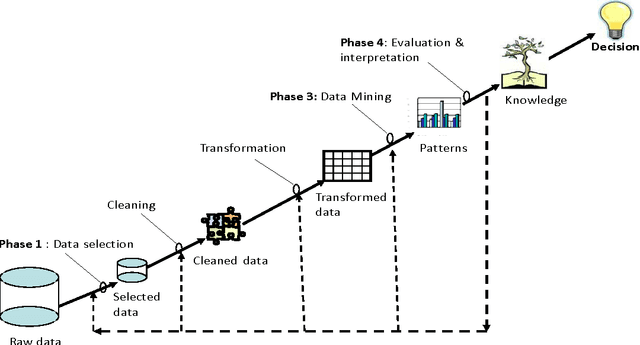
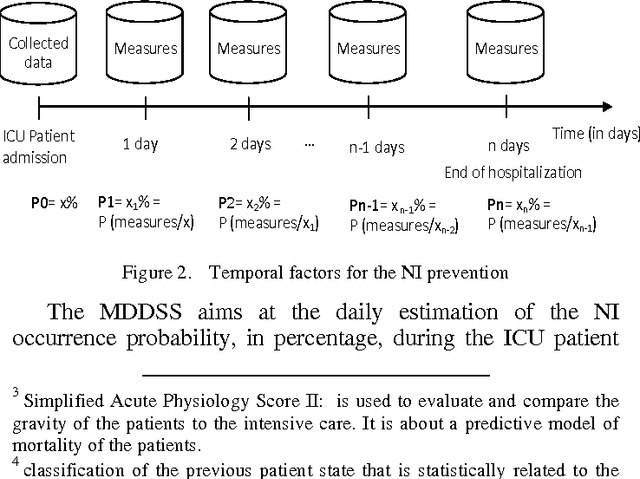
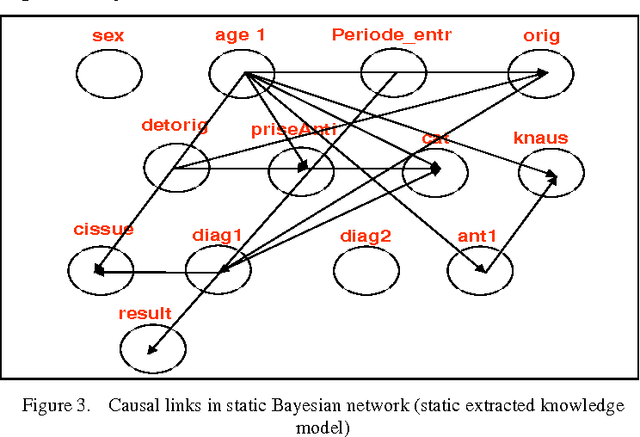
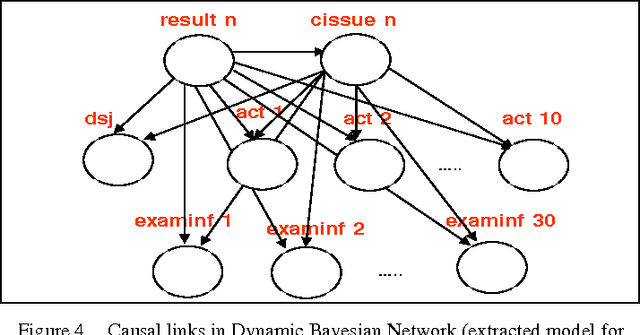
Abstract:The improvement of medical care quality is a significant interest for the future years. The fight against nosocomial infections (NI) in the intensive care units (ICU) is a good example. We will focus on a set of observations which reflect the dynamic aspect of the decision, result of the application of a Medical Decision Support System (MDSS). This system has to make dynamic decision on temporal data. We use dynamic Bayesian network (DBN) to model this dynamic process. It is a temporal reasoning within a real-time environment; we are interested in the Dynamic Decision Support Systems in healthcare domain (MDDSS).
* 8 pages, 6 figures, 43 references
 Add to Chrome
Add to Chrome Add to Firefox
Add to Firefox Add to Edge
Add to Edge